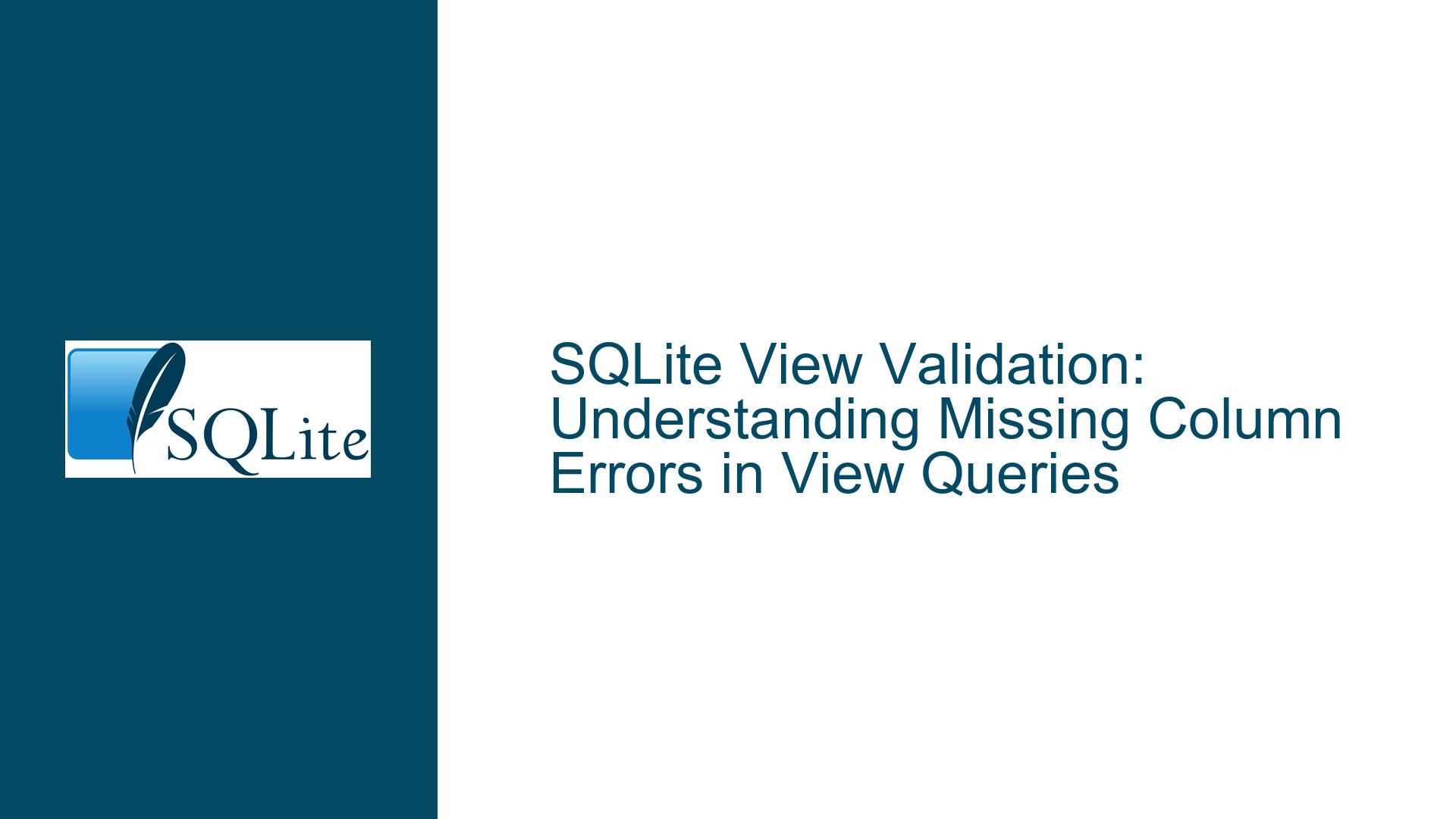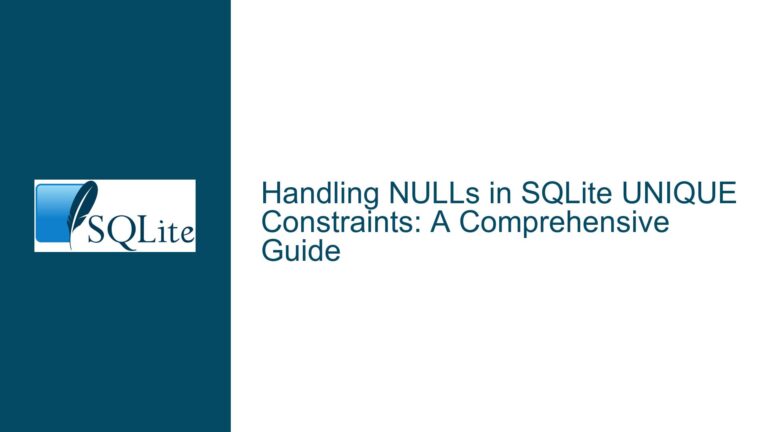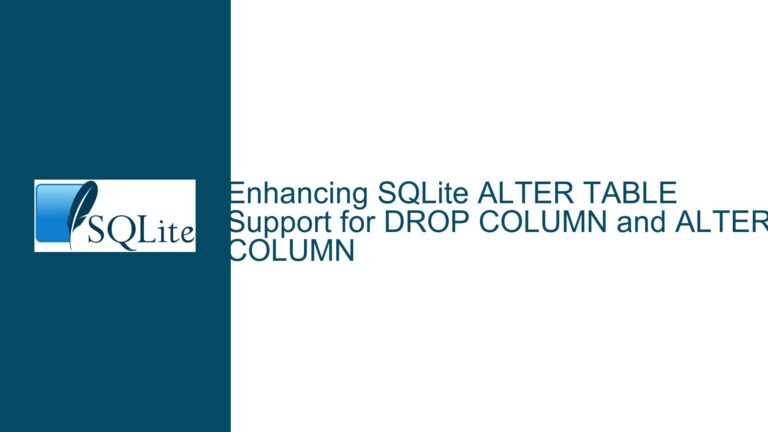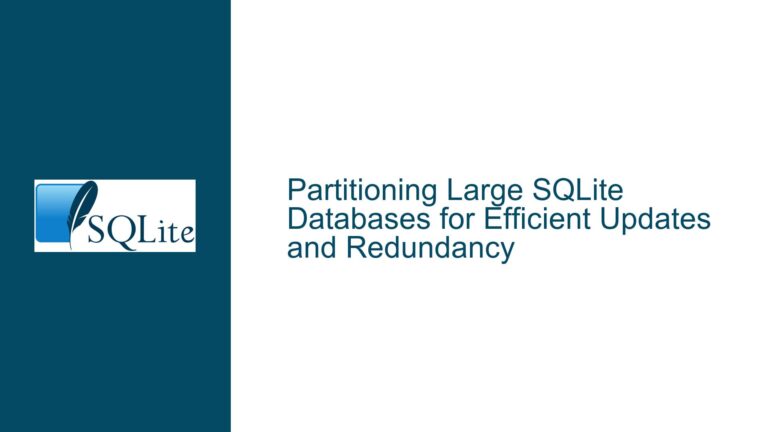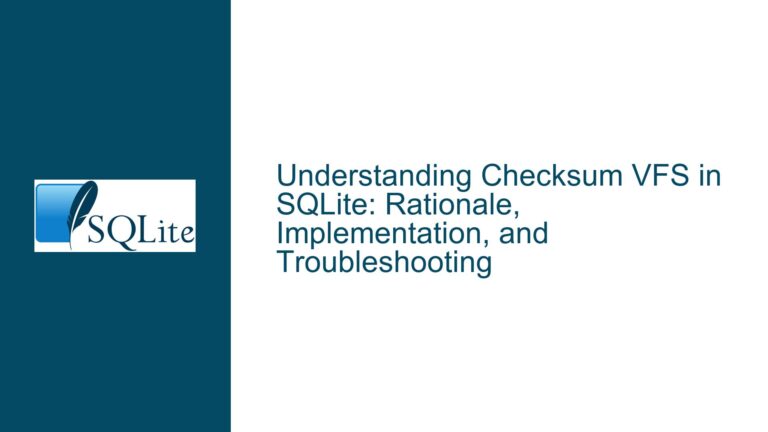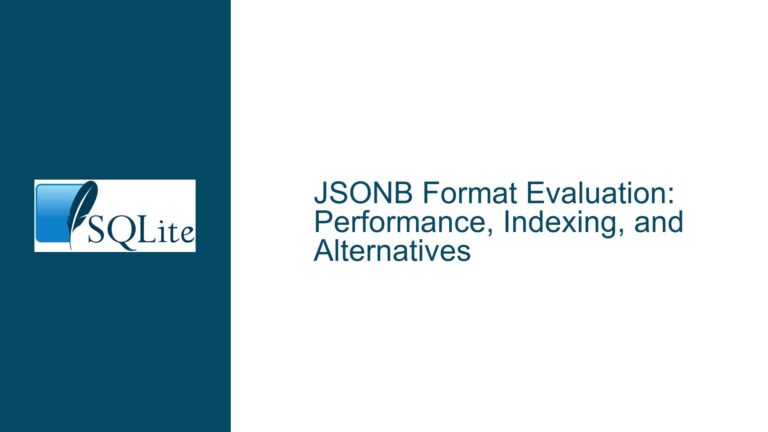SQLite View Validation: Understanding Missing Column Errors in View Queries
Issue Overview: Views in SQLite Do Not Validate Column or Table Existence at Creation Time
When working with SQLite views, developers often assume that the database engine performs comprehensive validation of the view’s underlying SQL query during the view creation process. However, SQLite’s behavior in this regard is nuanced. The CREATE VIEW statement primarily performs syntactic validation, ensuring that the SQL query adheres to the language’s grammar rules. It does not, however, perform semantic validation. This means that the existence of referenced tables, columns, or aliases is not verified when the view is created. The absence of semantic validation allows views to be created even if they reference non-existent entities, but this design choice introduces runtime errors when the view is queried later.
In the example provided, the view ProductDetails_V was created successfully, but querying it resulted in an error: Parse error: no such column: c.id. This error indicates that the column id in the alias c (representing the Categories table) does not exist when the view is queried. The critical observation here is that the error arises during the execution of a query against the view, not during the view’s creation. This behavior confirms that SQLite defers the validation of column and table existence until the view is accessed, which can lead to unexpected runtime failures if dependencies are altered or incorrectly defined.
A secondary observation involves the use of the pragma_table_info function. When attempting to retrieve metadata about the view’s columns using pragma_table_info('ProductDetails_V'), the same runtime error (no such column: c.id) occurs. This indicates that SQLite’s metadata pragmas for views rely on parsing the view’s underlying query, which can expose semantic issues at unexpected times. The combination of deferred validation and metadata pragma behavior creates a scenario where views may appear valid during creation but fail catastrophically during routine operations.
Possible Causes: Missing Columns, Schema Changes, and Alias Ambiguities
The root cause of the no such column: c.id error lies in the structure of the underlying tables or the view’s SQL logic. Three primary scenarios can lead to this error:
Missing or Renamed Column in Dependency Table:
TheCategoriestable, aliased ascin the view’s query, might lack a column namedid. This could occur if theCategoriestable was modified after the view’s creation (e.g., a column rename or deletion). For example, if theCategoriestable originally had a columnidthat was later renamed toCategoryId, the view’s reference toc.idwould become invalid. SQLite does not track or enforce dependencies between views and their underlying tables, so such schema changes are not automatically reflected in the view’s definition.Incorrect Join Conditions or Aliases:
The view’s query joinsProducts(aliased asp),Categories(aliased asc), andSuppliers(aliased ass). If theCategoriestable does not have a column namedid, but the intended join condition uses a different column (e.g.,CategoryId), the query would referencec.iderroneously. Similarly, typos in column names or aliases (e.g.,c.Idvs.c.idin a case-insensitive context) could lead to mismatches. While SQLite is case-insensitive for ASCII characters, inconsistencies in naming conventions can still cause confusion.View Created with Invalid References Due to Temporary or Dropped Tables:
If theCategoriesorSupplierstables were temporarily altered, dropped, or recreated with a different schema during the view’s creation process, the view might have been defined with references to columns that no longer exist. For instance, if theCategoriestable was dropped and recreated without anidcolumn during a transaction that included theCREATE VIEWstatement, the view could retain references to the now-missing column.
Troubleshooting Steps, Solutions & Fixes: Diagnosing and Resolving View Validation Issues
To resolve errors like no such column: c.id in SQLite views, follow these steps:
Step 1: Validate the Schema of Underlying Tables
Begin by inspecting the schema of the tables referenced in the view. Use the .schema command in the SQLite shell or execute PRAGMA table_info([TableName]) for each table involved. For the Categories table:
sqlite> .schema Categories
CREATE TABLE Categories (
CategoryId INTEGER PRIMARY KEY,
CategoryName TEXT,
Description TEXT
);
If the output shows that the Categories table lacks an id column but has CategoryId, the view’s join condition p.CategoryId = c.id is incorrect. The correct join should use c.CategoryId instead of c.id. This discrepancy indicates that the view’s SQL logic does not align with the actual table schema.
Step 2: Reconstruct the View’s Query for Standalone Execution
Extract the view’s SQL query and execute it as a standalone SELECT statement. This isolates the problem from the view’s metadata and confirms whether the issue lies in the query itself:
SELECT
p.*,
c.CategoryName,
c.Description AS CategoryDescription,
s.CompanyName AS SupplierName,
s.Region AS SupplierRegion
FROM Products p
JOIN Categories c ON p.CategoryId = c.id
JOIN Suppliers s ON s.id = p.SupplierId;
If this query fails with the same error, the problem is confirmed to be in the SQL logic or schema. If it succeeds, the issue might involve the view’s metadata or dependencies.
Step 3: Recreate the View with Corrected References
Modify the view’s definition to reference valid columns. For example, if Categories uses CategoryId instead of id, adjust the join condition:
DROP VIEW IF EXISTS ProductDetails_V;
CREATE VIEW ProductDetails_V AS
SELECT
p.*,
c.CategoryName,
c.Description AS CategoryDescription,
s.CompanyName AS SupplierName,
s.Region AS SupplierRegion
FROM Products p
JOIN Categories c ON p.CategoryId = c.CategoryId -- Corrected column name
JOIN Suppliers s ON s.id = p.SupplierId;
After recreating the view, query it again to verify that the error is resolved.
Step 4: Implement Schema Validation Checks
To prevent future issues, enforce rigorous schema validation during database changes. Use migration scripts that check for the existence of columns before creating or altering views. For example:
-- Check if Categories.CategoryId exists before recreating the view
SELECT COUNT(*) AS ColumnExists
FROM pragma_table_info('Categories')
WHERE name = 'CategoryId';
If ColumnExists is 0, abort the view creation and alert the developer.
Step 5: Monitor Schema Changes with Dependency Tracking
SQLite does not natively track dependencies between views and tables. Implement a manual tracking system using a schema_versions table or external tools like migration frameworks (e.g., SQLAlchemy, Alembic). Document all schema changes and ensure that views are updated accordingly.
Step 6: Utilize Static Analysis Tools
Use third-party tools or custom scripts to parse view definitions and validate column references against the current schema. For example, a Python script using the sqlite3 module could:
- Retrieve all view definitions from
sqlite_master. - Parse each view’s SQL to extract referenced tables and columns.
- Validate these references against the database’s schema.
Step 7: Educate Teams on SQLite’s View Validation Behavior
Ensure that developers understand that SQLite views are not semantically validated at creation time. Emphasize the importance of:
- Testing views immediately after creation.
- Avoiding ad-hoc schema changes without updating dependent views.
- Using transactional migrations to maintain consistency.
By systematically addressing schema discrepancies, validating SQL logic, and implementing preventive measures, teams can mitigate runtime errors in SQLite views and maintain robust database applications.
